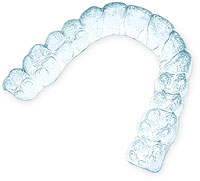
Invisble braces
There are many of us, especially older teenagers and adults who are concerned with the way our teeth looked. And yet, we cannot really do much about those unsightly crooked teeth because we do not want to be seen wearing orthodontic braces at an old age. This can be said as one of the biggest factor hindering adults from seeking orthodontic treatment, simply because orthodontic braces can be more unpleasant looking than their existing crooked teeth. This has all come to a change with the development of invisible braces, also known as clear dental braces which are not only highly aesthetic, but also straightens teeth at the same time, increasing the demand for adult dental braces.
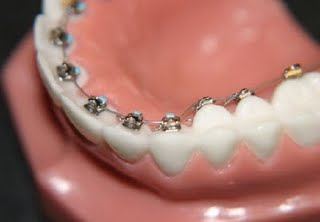
Lingual Braces
In the older days, aesthetic braces are done by fitting orthodontic metal braces on the inside surface of the teeth, facing the palate and the tongue. This is known as lingual braces. This method although is aesthetic, is not as effective compared with orthodontic braces placed on the front surface of teeth and can also be very traumatic to the tongue.
In 1994, Sheridan and colleagues came up with the idea of using clear plastic aligners to straighten teeth and this stems the origin of the popular invisible braces system, Invisalignâ„¢. Invisalignâ„¢ are not really braces per se, rather they straighten crooked teeth via a series of removable plastic invisible aligners. This means that tooth movement is done in sequence where once the maximum amount of movement allowed by an aligner is achieved; the next planned movement is carried out with the next invisible aligner.
What happens during the appointment?
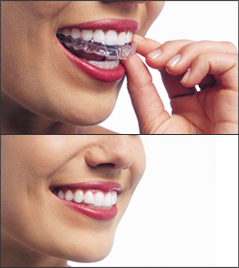
Invisible braces, Invisalign
Each individual case needs to be assessed and evaluated carefully by a specially trained dentist or orthodontist. Thus it may be useful to do some research before attending a consult as not all dental providers offer such service.
At the consult appointment, basic examination will be carried out and baseline records such as ‘before’ face and profile pictures and x-rays will be taken. An impression or mould of your teeth will be taken and that acts as a foundation for the fabrication of your invisible braces. Using 3-D software technology, your treatment is planned out by your orthodontist with computer generated visual images depicting the initial position of your teeth to the final stages of expected teeth position. This allows you to visualize the treatment even before you start, another great advantage of invisible braces compared with other orthodontic braces. Sequential plastic aligners are fabricated from thermoplastic material via computer analysis so that it fits your teeth perfectly, allowing precise and detailed movement to straighten teeth. Sometimes, additional accessories such as orthodontic elastics and composite resin blocks maybe added in conjunction with invisible braces to aid treatment.
Cost of invisible braces
Invisible braces cost the most compared with other orthodontic braces due to the material and technology involved in fabricating the sequential plastic aligners. Invisible braces can come with a hefty price tag of approximately 5000 to 7000 dollars, depending on which country you are living in.
How do I know if invisible braces are suitable for me?
Due to the limitations of invisible braces, it can only be used to treat mild to moderate types of malocclusion or crooked teeth. Hence it is essential to discuss your concerns and goals with your orthodontist. This allows them to assess your case according to your needs and pick the best treatment choice, be it invisible braces or orthodontic braces, whichever that is more suitable. They will be able to tell you the best treatment option and explained the expectable treatment outcomes. This should be done before commencing any sort of dental treatment to avoid disappointments and unnecessary dispute.
Benefits and advantages
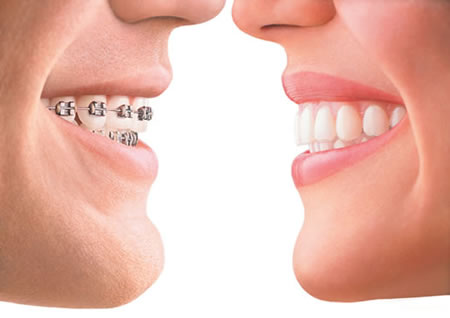
Comparison of orthodontic braces and Invisalign
- Invisible braces are very aesthetic – can hardly see the clear aligners in the mouth unless if you look really closely
- Ability to visualize computer generated images of your treatment
- Less incidence of ulcers as invisible braces are smooth and not traumatic to the soft tissues of the mouth (cheek, tongue)
- Invisible braces can be removed from the mouth – easier to maintain good oral hygiene as you can still brush and floss normally; as opposed to conventional orthodontic braces which requires stricter oral hygiene care
- Does not usually involve extractions or removal of teeth
- Shorter appointments as there is no need to adjust wires or brackets like conventional orthodontic braces
Limitations and disadvantages
- Can only treat mild to moderate cases of crooked teeth
- Tooth movements harder to control or predict as compared with fixed orthodontic braces, thus requires experienced clinician to assess case carefully
- Invisible braces can be very expensive
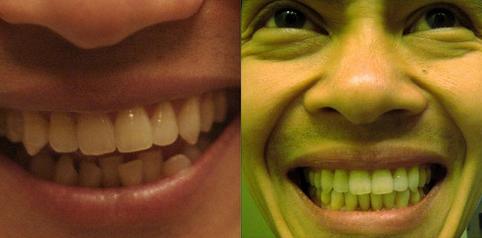
Pingback: Tweets that mention Tooth straightening with invisible braces | Intelligent Dental -- Topsy.com
Pingback: 3 Types of Orthodontic Braces You Must Know About | Intelligent Dental
Pingback: Top tips to care for adult orthodontic braces | Intelligent Dental
Even if it cost you so much on getting that perfect smile, Invisible braces are really worth getting because of its many advantages. One advantage that I really like about Invisible braces is that it is very comfortable.
Pingback: What Dental Corrective Surgery Could Do For You Part 1 | Intelligent Dental